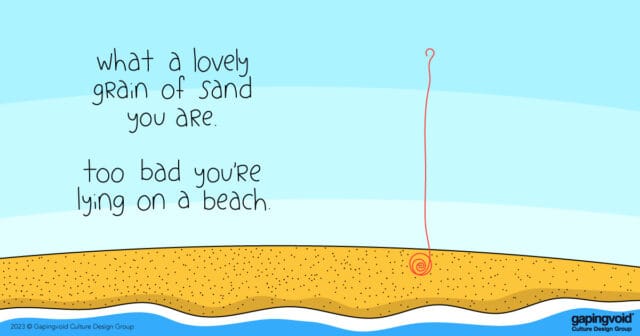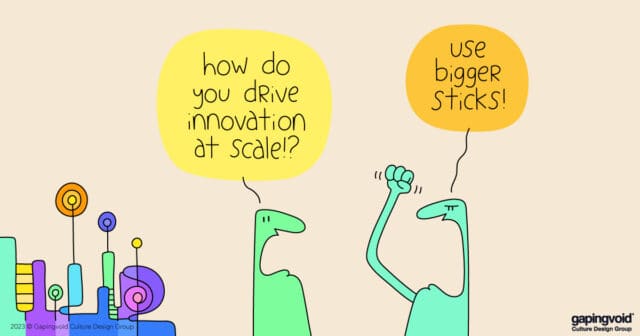
I don’t know if it was Brian Clark over at Copyblogger who first popularized the term, “Content Marketing”, but it’s he I most associate it with.
Content Marketing is exactly what is sounds like- creating content in order to more effectively market whatever it is you’re selling.
Copyblogger itself is a really good example of content marketing. It’s basically a daily advice column for anyone trying to do content marketing professionally. You get to read it for free, but hey, Brian and his team have other products they sell which are all designed to be interesting, useful and valuable to their core audience.
And Copyblogger rakes it in as a result; it’s now a seven-figure business.
Back in 2003, eons ago in Internet time, I remember talking to Henry Copeland, the founder of Blogads.com. This was well before the huge advertising market emerged for large sites like Techcrunch, Gawker, Mashable and BoingBoing, back when even the largest blogs were far smaller and far more personal than they are today.
We were chatting about potential business models for blogs, short and long-term. This was still very early days, remember…
“As far as I can tell,” said Henry, “the most viable business model for blogging these days is for under-employed consultants to show off how smart they are.”
Consultants showing off how smart they are? Under-employed or over-employed, that is content marketing. Exactly.
You write a blog. You build a dedicated following. You leave a discreet, non-pushy trail of breadcrumbs to what your business actually does for money. If X percent of your readers take the bait and become paying customers, hey, you win.
Like the headline of this post says, it’s much easier to get paid work out of people if they’re already your fanboy.
What I like about this model is that it’s simple. It isn’t rocket science. And perhaps more importantly, it’s free from the tyranny of wanting or needing huge traffic.
[Warning- VERY rough math to follow:] English Cut can only make and sell about 100 hand-tailored Savile Row suits a year. I can only handle a small handful of Cube Grenade clients at one time. Same with James Governor at Redmonk or Piers Fawkes at PSFK. And if say, our blogs can convert one or two percent of our hardcore readers into customers, in theory, the total readership per blog only needs to be fifty or a hundred times that in order to make the business viable. A few hundred people, maybe a couple of thousand- very attainable (and sustainable) numbers.
So if you get it right, you can just do your thing, delighting, thrilling (and selling to) the audience that you already have, without obsessing over which “A-Lister” is linking to you (or not), or how many new Twittter followers you’ve gotten (or haven’t) since last month. Nor do you have sleepless nights fretting over the fact that your blog doesn’t have the same number of readers as The Atlantic, The New Yorker, The Economist, Wired etc. Or whatever silly, energy-draining neuroses that so many other social media mavens seem to fall prey to.
That’s the good news. The bad news is, effective content marketing requires two things: world-class content and a world-class product. Harder than it looks. Life is unfair.



